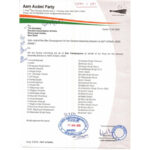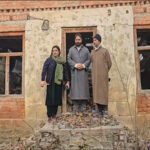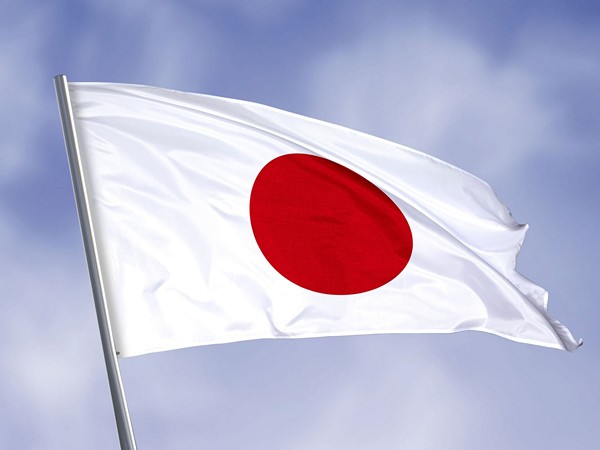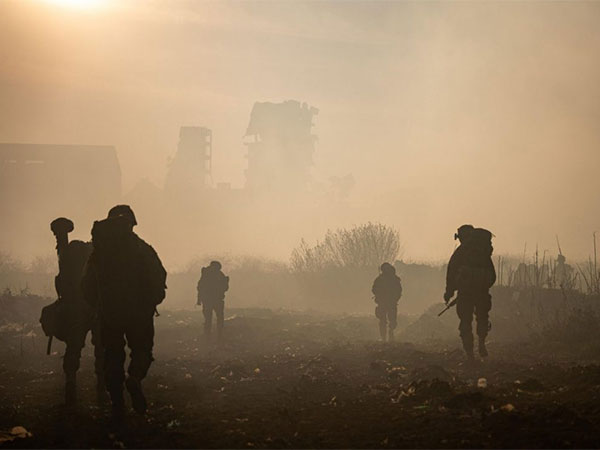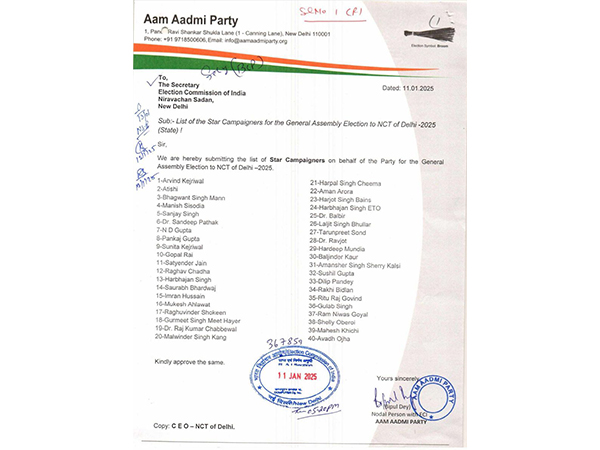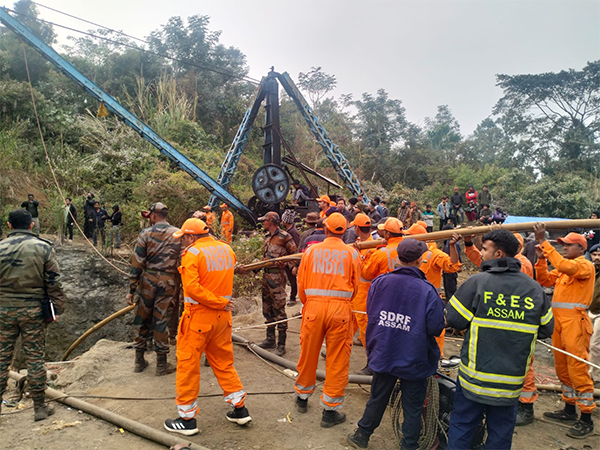
By Binod Prasad Adhikari
Lalitpur/Kathmandu [Nepal], November 28 (ANI): As the FIFA World Cup has started, Nepali workers who were involved in construction work at Qatar have recalled their experience of working in the Middle Eastern nation.
Hari Bahadur Shrestha watched the football match between Costa Rica and Japan which was being held at Qatar, a country where he worked for 3 years as a worker immediately after it won the bid to host the latest edition of the World Cup.
Hari Bahadur Shrestha went to Qatar at the time when the world football body – FIFA had awarded the gulf nation with the title of host for the 2022 World Cup games in early 2010. He went to the Gulf nation at the time when the world football body- FIFA had awarded Qatar with the title of host for the 2022 World Cup games in early 2010.
Speaking to ANI, Hari Bahadur Shreshtha, a Qatar returnee Nepali migrant worker, said, “When it comes to facilities that were promised at the time of recruitment, they weren’t fulfilled. The case only was not applicable to my company but to almost all the companies there. I also was promised to pay 1200 (Qatari Riyal) but while working there I was only given 900 (Qatari Riyal). We tried to protest against it but they (the company) instead threatened me to deport back.”
He worked as a painter without any safety gear for the construction of the City Center in Qatar’s capital Doha. According to Shreshtha, he was just given a jumpsuit and a helmet as he had to paint the walls taking support of metal beams erected around. Hari Bahadur Shreshtha further said, “I worked for three years there. I returned back to Nepal quite a time before, it’s been around 7-8 years since I returned back but back at that time, the preparations and constructions had already started for the World Cup, and infrastructures were being set up including the stadiums and other things.”
He used to take shelter in a room packed with fellow migrant workers from Nepal and other nations to save money during the stay. According to Shreshtha, the company did not provide them with adequate accommodation and food facilities. Shreshtha said that while working in Qatar, he used to wake up at 3 am (Qatari time) to reach for work on time and return late at around 8 pm (Qatari time). He revealed that misbehavior was a regular phenomenon at the work site.
Revealing details regarding misbehavior in Qatar, Hari Bahadur Shreshtha claimed, “While working on the field we needed to use the toilet, the fore-men to other workers use to misbehave with us and they use to take those actions as an attempt to cheat which wasn’t our intention.” Shreshtha came back early after facing health problems and was deemed unfit to work further.”
A report “Vital Signs: Deaths of Migrants in the Gulf”, made public on March 10 this year has revealed that migrant workers in the Gulf are exposed to a series of risks to their health, including heat and humidity, air pollution, overwork, and abusive working conditions, poor occupational health and safety practices, psychosocial stress and hypertension. Long hours of manual labour in searing temperatures can result in heat stress, which can lead to organ damage.
The report said that as many as 10,000 migrant workers from South and Southeast Asia lose their lives in six countries in the Gulf every year. Around half of the migrant worker deaths are not explained, which means that deaths are certified without any reference to an underlying cause of death.
The report reads, “Low-paid migrant workers in the Gulf are subjected to a range of risks to their health that place their lives in jeopardy. Working and living conditions, psychosocial stress, and lack of access to health care are among the reasons for the rising deaths.” The report that has analyzed the numbers and causes of deaths of migrant workers in the destination countries has claimed that the cause of the death is not transparent while many of those deaths could have been avoidable.
The migrant worker deaths have been classified broadly into seven categories– cardiac arrest, heart attack, natural cause, traffic accident, suicide, workplace death, and other causes. However, the researchers claim categories are not aligned with international guidance on classification.
As many as 7,296 male and 171 female migrant workers from Nepal lost their lives in a decade between the fiscal years 2008-2009 and 2018-2019 and heart attacks and natural causes accounted for 47 percent of the total deaths. Road accidents with 20 percent of all deaths are the second highest reason for Nepali migrant workers followed by suicide (9 percent).
Reejan (name changed), a Qatar returnee Nepali migrant worker said, “Staying there was quite hard. In Qatar, we were only paid if we worked. If a worker gets absent for a day then it would result in a deduction of three days’ wage. At the time of illness also no one was allowed to take rest, we were forced to work at any kind of situation.” The migrant worker did not reveal his identity fearing repercussions. Reejan had witnessed an accident while coming back from work when a high-speed vehicle struck some fellow migrant workers injuring many and killing one. He said that the incident still haunts him and makes him remorseful.
Recalling the accident, Reejan said, “I had seen an accident while we were returning back from work. A high-speed vehicle had caused the accident leading to the death of one and injuring many others- with broken legs and wounds.” According to him, the injured underwent treatment for their injuries and some of them were sent back to Nepal as they were deemed unfit to work. The workers were mainly assigned to work at the aluminum factory. He was promised to be provided with the work of carpentering while he was in Nepal. However, he had to work as an aluminum worker.
The recent returnee from Qatar in his late 20’s told ANI, “The work was different than promised here, while I was preparing to go I was promised to be paid for overtime work as well but it didn’t exist on field.” Reejan went to Qatar in search of work in his late teens and returned in his early 20’s (2015-2020). Being the only breadwinner of his family of three, he still has plans to go abroad for work as the income in Nepal isn’t enough to support his family.
Reejan further claimed, “Nepali have really worked hard for the development of Qatar but what the government there is doing against Nepali is not justifiable.” Reports suggest there are about 30 million migrants working in the Arab Gulf states–the United Arab Emirates, Bahrain, Saudi Arabia, Oman, Qatar and Kuwait. 80 percent of these migrant workers are employed in low-paid sectors such as construction, hospitality and domestic work. During the pre-pandemic period, these seven countries were hosting an estimated 1.27 million Nepali migrant workers.
A report, compiled by NGOs from Nepal, Bangladesh, India, Pakistan, and the Philippines, and FairSquare Projects, a London-based migrant rights organization, revealed that low-paid migrant workers in isolated and unsanitary labour camps are often working extremely long hours in dangerous conditions to service debt from recruitment fees. They often do not receive training on occupational health and safety and cannot access healthcare.
According to the report, low-paid migrant workers in the Gulf are subjected to a combination of risks to their physical and mental health. These risks originate from the workplace, living conditions, and the environment. They vary in seriousness, and they are to varying extents under-researched and under-reported.
Since October 2017, the Qatari government has introduced several reforms aimed at improving conditions for migrant workers after Doha committed to aligning its laws and practices with international labour standards.
The reforms include setting a temporary minimum wage, introducing a law for domestic workers, setting up new dispute resolution committees, mandating the establishment of joint labour committees at companies employing more than 30 workers for collective bargaining, establishing a workers’ support and insurance fund, and ending the requirement for most workers to get an exit permit through their employer to leave the country.
Qatar has a population of about 2.8 million, including 1.7 million foreign labourers, according to Amnesty International. In preparation to host the soccer championship, the first in the Middle East, Doha launched a modernisation project that included expanding its main airport and public transportation systems and building stadiums and hotels.
Last year, Qatar made a policy to send home thousands of migrant workers who built the stadiums and other infrastructure for the World Cup by placing them on five months’ unpaid leave so they would not be visible during the tournament. In a bid to accommodate the expected influx of players, supporters and the media, Qatar’s hotel industry has added 26,000 rooms, and it needs hordes of workers to run them. Nepal has allowed Qatar to hire Nepali workers for a temporary period in the service sector. The number of workers to be hired, however, has not been decided. (ANI)

